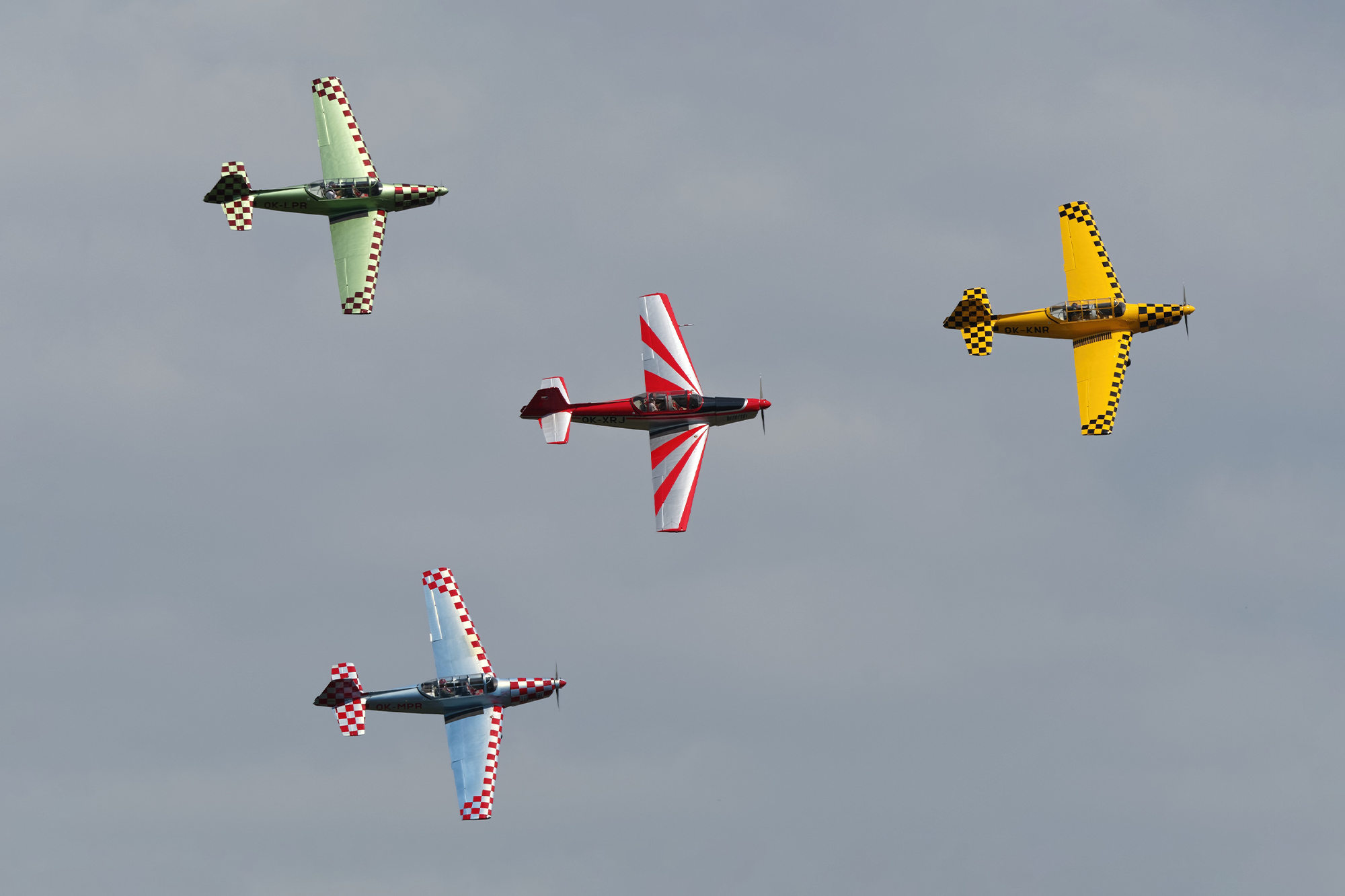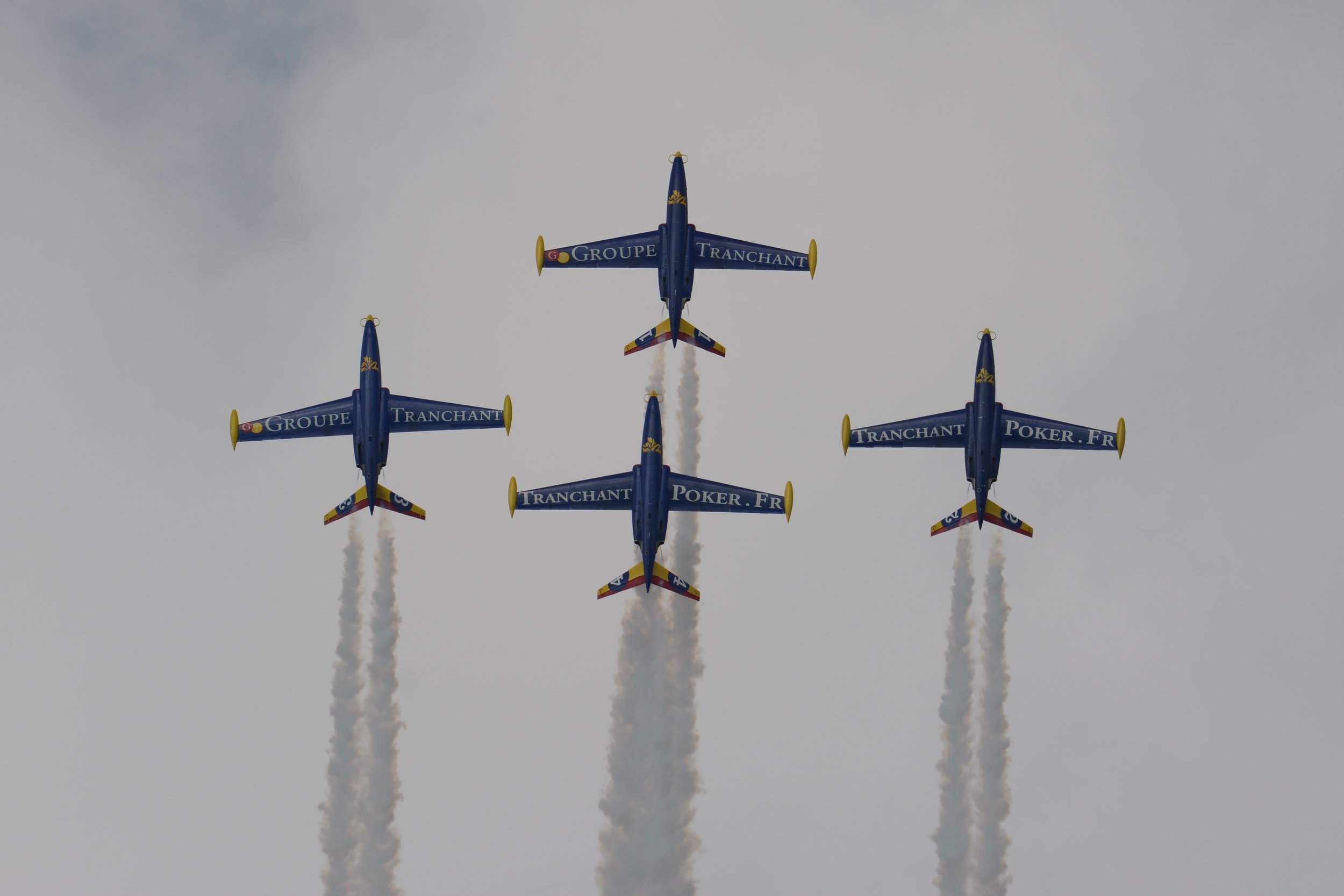Irish Historic Flight
Country
Ireland
Size
4 Aircraft
Base
Ballyboy Airfield
The Irish Historic Flight Foundation was established with the aim of honouring and showcasing Ireland's diverse aviation legacy. Its fleet of historic aircraft can be regularly spotted at various aviation gatherings across Ireland, captivating audiences with thrilling solo performances as well as meticulously executed formation displays involving up to four planes. Presently, the team proudly flies three De Havilland Chipmunks adorned in the classic Irish Air Corps livery, alongside a majestic Boeing Stearman named "Spirit of Tipperary". While the Foundation previously included the iconic De Havilland DH84 Dragon in its lineup, this particular aircraft has been absent from the skies for several years, awaiting its triumphant return.
| Back to Top |
Boeing-Stearman Model 75
The Stearman (Boeing) Model 75 is a biplane formerly used as a military trainer aircraft, of which at least 10,626 were built in the United States during the 1930s and 1940s. Stearman Aircraft became a subsidiary of Boeing in 1934. Widely known as the Stearman, Boeing Stearman, or Kaydet, it served as a primary trainer for the United States Army Air Forces, the United States Navy (as the NS and N2S), and with the Royal Canadian Air Force as the Kaydet throughout World War II. After the conflict was over, thousands of surplus aircraft were sold on the civilian market. In the immediate postwar years, they became popular as crop dusters and sports planes, and for aerobatic and wing walking use in air shows.
The Kaydet was a conventional biplane of rugged construction, with a large, fixed tailwheel undercarriage, and accommodation for the student and instructor in open cockpits in tandem. The radial engine was usually not cowled, although some Stearman operators choose to cowl the engine, most notably the Red Baron Stearman Squadron.
| Back to Top |
de Havilland Canada DHC-1 Chipmunk
The de Havilland Canada DHC-1 Chipmunk is a tandem, two-seat, single-engined primary trainer aircraft designed and developed by Canadian aircraft manufacturer de Havilland Canada. It was developed shortly after the Second World War and sold in large numbers during the immediate post-war years, being typically employed as a replacement for the de Havilland Tiger Moth biplane.
The Chipmunk was the first postwar aviation project conducted by de Havilland Canada. It performed its maiden flight on 22 May 1946 and was introduced to operational service that same year. During the late 1940s and 1950s, the Chipmunk was procured in large numbers by military air services such as the Royal Canadian Air Force (RCAF), Royal Air Force (RAF), and several other nations' air forces, where it was often utilised as their standard primary trainer aircraft. The type was produced under licence by de Havilland in the United Kingdom, who would produce the vast majority of Chipmunks, as well as by OGMA (Oficinas Gerais de Material Aeronáutico) in Portugal.
The type was slowly phased out of service beginning in the late 1950s, although in the ab initio elementary training role, this did not happen in the Royal Air Force until 1996 when it was replaced by the Scottish Aviation Bulldog.
Many Chipmunks that had been in military use were sold to civilians, either to private owners or to companies, where they were typically used for a variety of purposes, often involving the type's excellent flying characteristics and its capability for aerobatic manoeuvres. More than 70 years after the type having first entered service, hundreds of Chipmunks remain airworthy and are in operation around the world. The Portuguese Air Force still operates six Chipmunks, which serve with Esquadra 802, as of 2020.
The aircraft is named after the Chipmunk, a small rodent.
| Back to Top |

















| Back to Top |

































